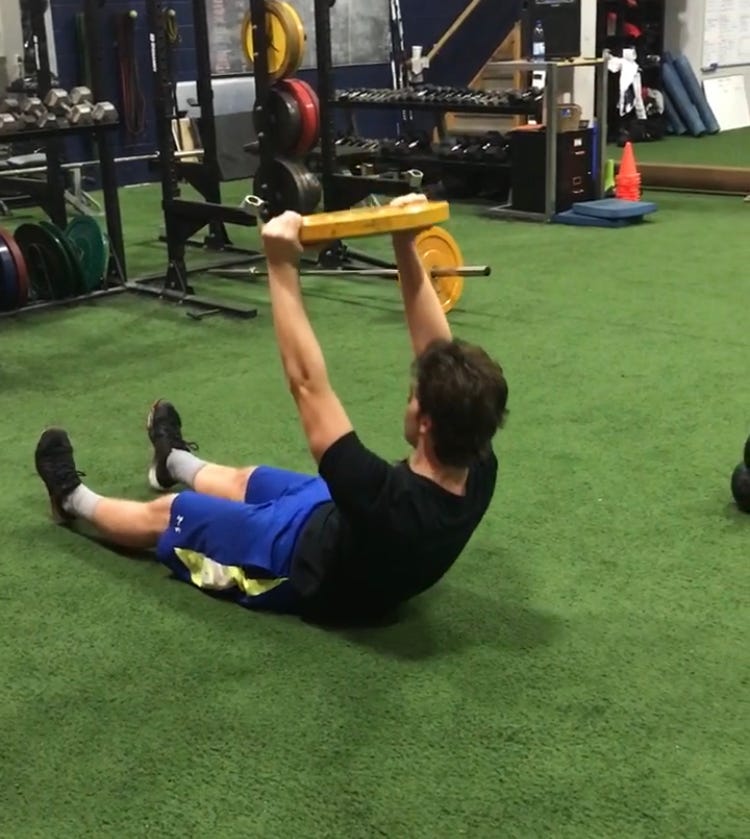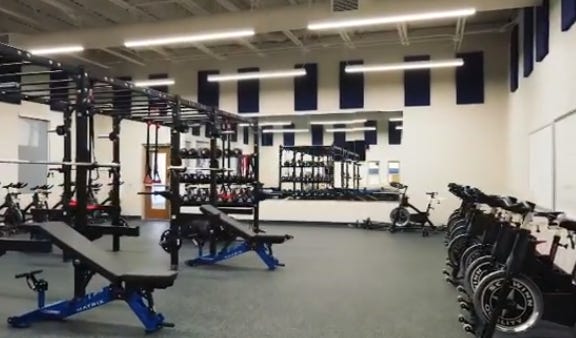The Young Athlete & Strength Training. Trends & Myths. Pros & Cons.
Strength training is a very strong trend in athlete development. Let's review the benefits and concerns.
When young Canadian athletes compete the USA during their teenage years, one thing shows up immediately at the highest levels. The American athletes look bigger. They look thicker, especially from 16 years old and on. Regardless of the sport, this shows up repeatedly and reflects the priority placed on preparing the body for the demands of competition. This is not just an American trend however, they simply adopted this a little earlier than other countries.
If we go back 20 years or more, the prevalence of weight rooms and strength coaches was not common anywhere. That has changed drastically today. If teams don’t promote off field strength and conditioning as part of their development, then young athletes and their families will seek out 1 on 1 coaching.
Let’s start with some terminology. Strength training for athletes is actually referring to strength and conditioning. A strength & conditioning program will include more than just strength training. A good program will include mobility, agility, speed, power, strength and conditioning components. This is more comprehensive that simply lifting weights and should be thought of as such. Simply, it is preparing the body for the demands of competition.
Strength & conditioning for young athletes has grown in its integration into many sports. The physique of team and individual athletes are all different than previously.

There are many reasons for this.
1. Young athletes don’t move as much. Years ago, multi-sport athletes were much more common where the play of one season in 1 sport complimented another in a 2nd sport. Combine this with the reduction of daily school gym time, reduced free play and increased screen time also being contributors. As a result movement capacity suffers, and the risk of injury increases when they return to their chosen sport.
2. Science. Research on benefits of strength training has evolved over the years. This has changed the perspective on the role of strength training young athlete development. Historically, strength training for young athletes was thought to be detrimental to skill development. Today, it is understood as critical in injury prevention and maximizing performance on the field of play.
3. Availability of coaches. Currently there are coaches in every community that are very knowledgeable and experienced when it comes to training young athletes. Online options have also now provided an outlet for finding qualified coaches. Unfortunately, there is still a low barrier to entry for strength coaches into the world of training athletes because of that, not all are great. The Physical Movement covered how to choose a strength and conditioning coach in a previous edition. Empowering yourself on choosing the right coach for your athlete and/or team is critical for progress to occur.
4. Acceptance. Youth sports organizations now more accepting of strength training contributing to less time injured and quicker recovery when injuries do occur. There is still a lot of work to be done in terms of what is offered to the growing athlete, and what creates a high standard for a program. Examples include how to cater to the differences between male and female athletes, teaching speed training techniques, maturation differences and others, but for the most part we are on the right track.
5. Embracing the process. The process and/or journey of developing athleticism, strength and movement capacity is being embraced more and more. The value of lessons around making progress a little at a time, focusing on the journey and not outcome are very valuable in athlete development.
The growth of strength training in young athlete development also brings concerns:
a. Lack of knowledge and improper knowledge can do damage. As mentioned above, there is a low barrier to entry into offering strength and conditioning services. With this comes organizations trying to take cookie cutter programs and shortcuts in offering 1 size fits all programming. This is dangerous on many levels, most importantly then doing more harm than good to a young athlete. A common example is the role of lifting heavier weights in building strength. Shortcuts often bypass developing proper movement capacity first and then integrating practice with progressions over time. This only happens under the tutelage of a qualified coach.
b. The myth that strength and conditioning is only about effort and moving resistance.
The ability to move is critical in an athletes’ resilience to injury and performance on the field. Balance, power, agility, mobility, reaction time, coordination are all critical foundational skills that should be practiced and developed. Don’t make the mistake of thinking lifting weight will translate well to performance without a strong movement foundation.
c. No evaluation and assessment of the athlete and program. Without assessing the athlete and tracking of performance metrics then a program can spin without purpose or progress. Understanding athlete imbalances during an assessment can predict likelihood of injury in particular areas.
d. Implementing adult programs into youth sports. This is a shortcut and inappropriate. Individual differences and maturation rates are the biggest challenge here. What is good for the late teenager is often not appropriate in younger teenage years. What is appropriate for the young female athlete is different than for male athlete for example.
e. Thinking that strength and conditioning needs to be sport specific. Athletes can benefit from better balance, reaction time, agility, speed and explosiveness. This transcends all sports. Until the athlete gets much older into late teens, a very small % of the program should be sport specific. A well rounded youth strength and conditioning program builds athleticism while focusing on the above skills.
Frequently Asked Questions:
When should young athletes start strength training?
While the research now promotes the benefits of strength training at a very young age (7-8 years old) there is also the recommendation of implementing movement based training and not just lifting weights.
The fundamentals of moving well and developing technique are critical in safely adding resistance as training age develops. This is the foundation that leads to strength and power development for their sports.
Can weight training stunt a child’s growth?
This is an older thought process, and the answer is no. When done with the supervision and coaching appropriate for the age group, strength and movement training can strengthen bones and assist the development process.
What is the role of weight training and speed development?
The ability to move the body well combined with strength equals improved speed. Weight or resistance training assist strength development. Strength improves speed.
Should athletes train while in season?
Yes. In last week’s edition, The Physical Movement covered that topic. Training improvements can decline once workouts stop, and maintenance should be part of an in season routine.
Will weight training affect the body’s ability to move?
That is a myth from years ago as well. For a long time much of the popular mindset around weight training and sports was to stay away so as to not get muscle bound and restrict movement. Understanding the link between strength and how it can support movement changes that thought process.
Lets go back to the power of playing different sports. Cross training.
Tag.
Dodge ball.
Hide and go seek.
Road hockey
Touch football.
Stick ball/wiffle ball.
Baseball for the hockey player.
Basketball for the soccer player.
Soccer for any athlete of another sport.
These were the pastimes of yesteryear. Today, one sport focus is often year round. The one way we can ruin an athlete’s development even before they hit stride is over training, and not considering the muscle imbalances that come from repetitive motion over time.
Most college athletes were multi-sport participants growing up.
Playing multiple sports becomes harder to manage at high levels once the athlete reaches 15-16 years of age. Working within a solid strength and conditioning program will allow for imbalances to be corrected and skills to be developed that will enhance performance.
The Last Word: Strength training in youth through adulthood not only improves athletic development, but also improves physical and mental health, self confidence, ability to focus and coping skills.
Don’t allow myths and outdated mindsets direct us down the wrong path. Knowledge is power. Use the current trends and best practices to help guide your athletes. They are people first. Athletes 2nd.
PLAY. LEAD. BE STRONG.
Additional resources to support your young athlete and their strength training.
From The American College of Sports Medicine: Pediatric Resistance Training : Benefits, Concerns, and Program Design Considerations
Examples of investments in the modern strength and conditioning room:
Middle School Weight Room Wisconsin, USA
High School Fitness Center, Vancouver Island, BC
The soccer queen Erica Suter shares 6 key drills for your young athlete.
Some myths addressed:
https://www.childrens.com/health-wellness/what-age-can-you-start-lifting-weights
https://simplifaster.com/articles/introducing-youth-athletes-strength-training/
Young Athlete Development:
https://www.stack.com/a/how-we-ruin-young-athletes-before-they-get-a-chance-to-blossom
https://www.stack.com/a/5-reasons-college-coaches-love-recruiting-multi-sport-athletes
Speed training at a deeper level:
https://thephysicalmovement.substack.com/p/the-science-of-speed-technique-training







